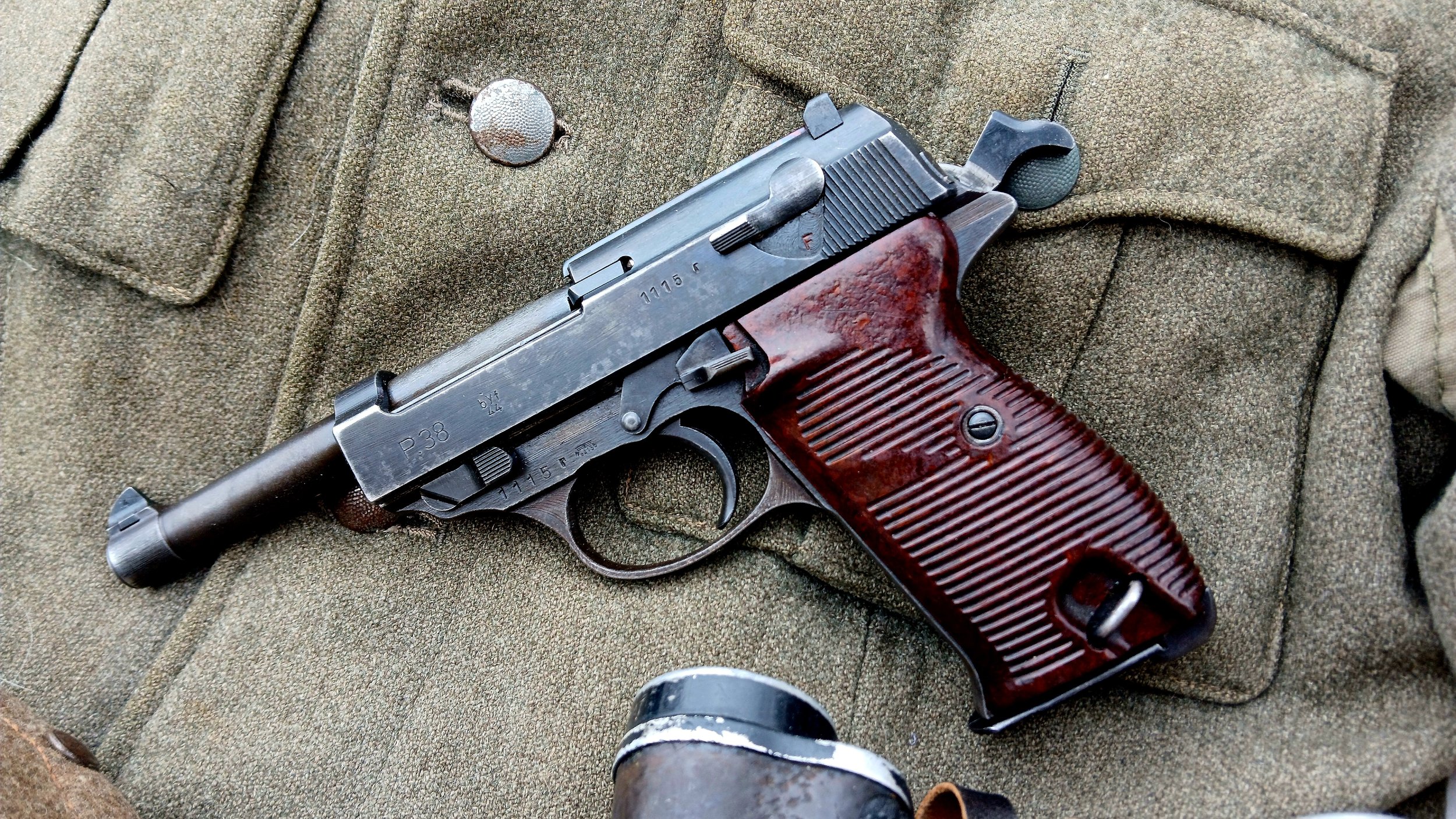
December, 2025
Walter P.38
German Reich
Second World War
Made by Mauser in 1944
9x19mm Parabellum
Categories
M1917 Enfield
When the United States finally entered the Great War in 1917 it found itself facing a significant shortage of modern rifles, and turned to a foreign design already in mass production domestically.
Gewehr 88/05
Germany’s first smokeless powder design was not without its problems, but still found itself a prolific presence on the battlefields of the Great War.
Lee Enfield SMLE MkIII*
Despite initially looking to replace the entire system after the Boer War, the British Short, Magazine, Lee Enfield really came into its own during the Great War, cementing itself as one of the most iconic weapons of the conflict.
Steyr Hahn M1912
The standard issue sidearm of the Austrian half of the Hapsburg Empire’s forces in the Great War was a solid if eclectic handgun that would prove cable in locals such as the Balkans, Eastern Front and Italian Alps.
Type 38 Arisaka
Problems with Japan’s first smokeless powder rifle prompted a redesign of the mechanism, leading to one of the strongest and simplest rifles ever produced, which would serve the Empire for almost half a century.
Mle. 1892 “Lebel” Revolver
The first smokeless powder handgun adopted by France was an interesting revolver designed with cavalry in mind, but would serve on long after the demise of the horse soldier.
Mosin Nagant Dragoon
When the original Three-Line Rifle M1891 Mosin Nagant was adopted, a slightly shorter model followed soon after to fill a unique role in the army of Tsar Nicholas II
Beretta M1917
When the Kingdom of Italy marched to war in 1915 they carried the black powder Bodeo revolver in their holsters. Over the course of the conflict development of a reliable autoloader would prove problematic until later in the war.
M1903 Springfield
Despite victory in the Spanish-American War of 1898, it was clear that the Krag rifles in American service were inferior to the Mausers used by their enemies. This prompt would lead to the development of a new universal short rifle that would serve in two world wars and beyond.
Lee Enfield RIC Carbine
Shortly after the turn of the 20th century, the British Royal Irish Constabulary adopted a new carbine for its constables, built from older MkI Lee Enfield and Lee Metford Carbines with some modifications. These would serve through the Easter Rising of 1916, as well as the subsequent Irish War of Independence that would see the end of British rule in most of Ireland, and the dissolution of the RIC itself in 1922.
Lebel M1886
The first smokeless powder rifle would put represent the most significant advance in small arms technology since the advent of gunpowder itself, but the rifle itself would be rapidly rendered obsolete, despite serving on for more than half a century.
Carcano Moschetto M1891
The cavalry carbine model of Italy’s Carcano is perhaps the most iconic of the series, having seen use by specialists such as the Arditi in the First World War as well as the Folgore paratroopers in the Second among many others.
Ross MkIII
Canada’s first indigenously produced infantry rifle was a straight pull design made with match grade accuracy in mind. When brought to the conditions of the Great War’s Western Front its deficiencies in other areas became alarmingly apparent.
Ruby Mle.1915
A crude Spanish copy of the Colt Model 1903 became the most common French handgun of the Great War, seeing extensive service in that conflict. Despite its almost disposable nature the pistol would remain in service for decades beyond as well.
Mauser M1903
The most modern rifle in Ottoman inventory during the Great War was an example of the excellent Mauser 98, with some special features. These rifles would serve as a pattern during the interwar Turkish upgrade program, in addition to receiving minor modifications themselves.
Mannlicher M.1895
The straight-pull Mannlicher M.95 was the standard issue service rifle of the Austro-Hungarian Empire during the Great War, with millions produced and serving on the Eastern Front and in northern Italy, as well as other Fronts. It would continue in service to the the Empire’s successor states through the Second World War.
Webley MkVI
The large .455 Webley MkVI revolver was the standard service sidearm of the British Army during the First World War, and remained in service through the Second World War as well despite being replaced by .38/200 designs for the latter conflict as the primary arm.
Fucile M91 Carcano
The Kingdom of Italy would wisely chose a rifle within their industrial means with the M1891 Carcano, a rifle that would, despite it’s shortcomings, serve on through both the First and Second World Wars.
Included at the end of each posting is a reference to the rarity and average price observed by the author. This is, or course, subjective, and results may vary depending on a variety of factors, including condition, certain markings, etc., while rarity may vary depending on time and location.
Rarity is marked on a scale as follows:
Production (currently produced)
Surplus (Currently available on the surplus market)
Common
Uncommon
Rare
Very Rare



















